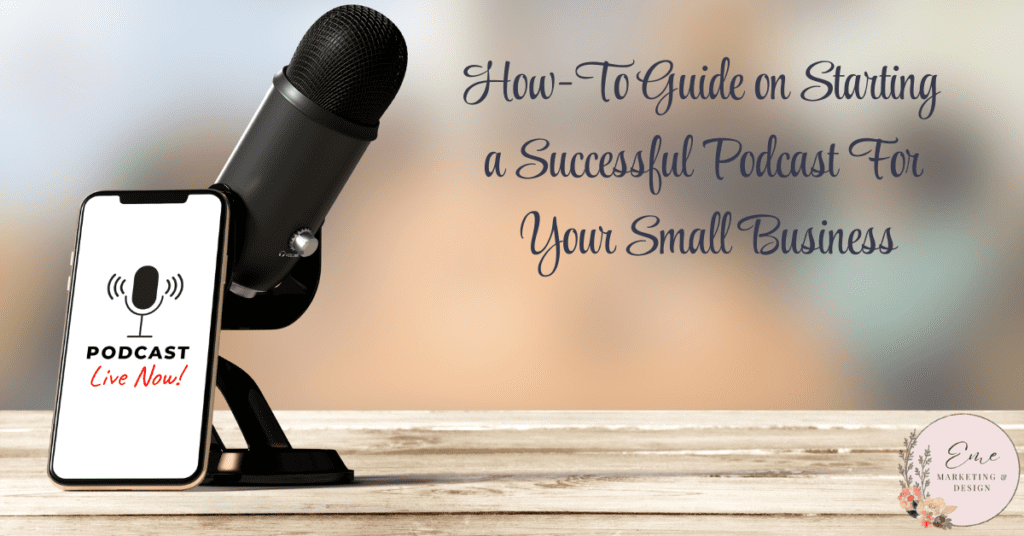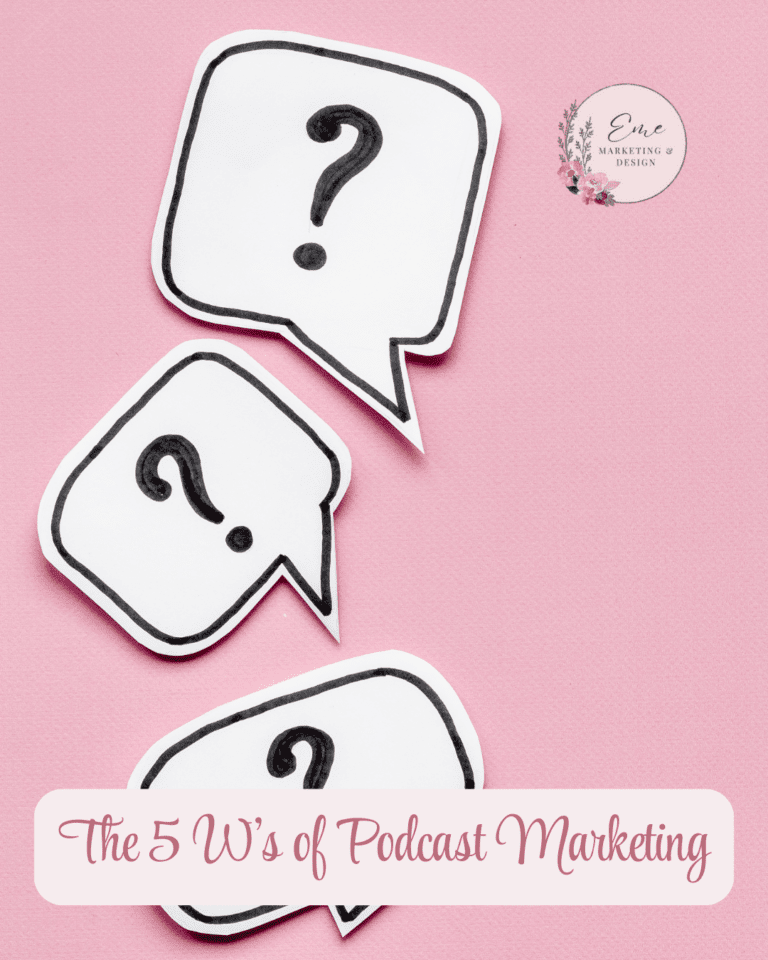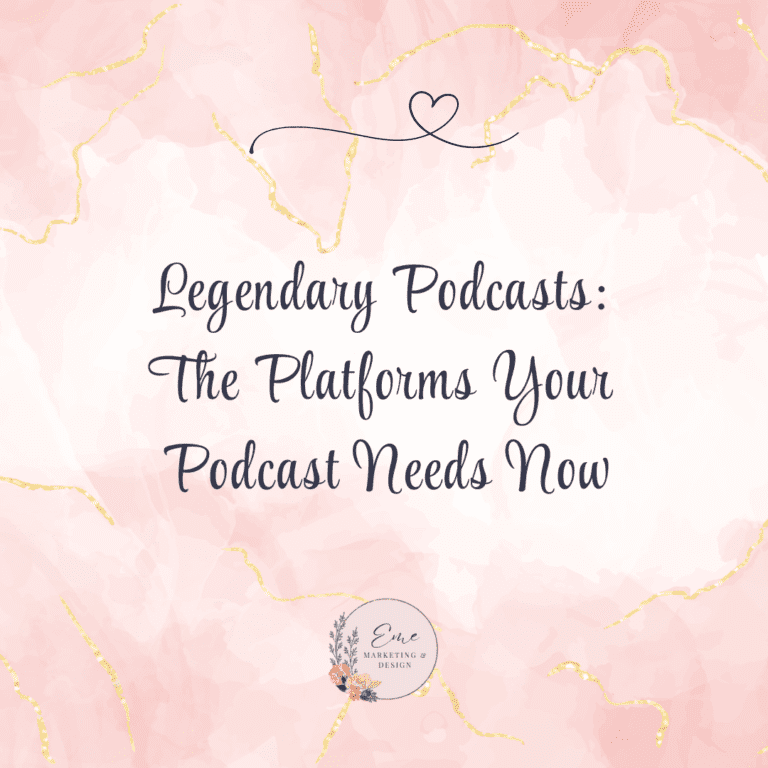
Starting a podcast for your small business can be a powerful way to connect with your audience, establish your brand’s authority and grow your customer base. Whether you’re a seasoned entrepreneur or new to the business world, podcasting offers a unique opportunity to share your story, expertise and insights personally and engagingly. Here’s a step-by-step guide to help you start a podcast for your small business.
1. Define Your Podcast’s Purpose and Target Audience
Before you dive into the technical aspects of podcasting, it’s essential to define the purpose of your podcast and identify your target audience. Consider the following questions:
- What do you want to achieve with your podcast? Are you looking to build brand awareness, educate your audience, or generate leads?
- Who is your target audience? Understanding your ideal listeners will help you tailor your content to their interests and needs.
2. Choose a Podcast Format
Podcasts come in various formats, and choosing the right one for your business will depend on your goals and audience preferences. Standard podcast formats include:
- Interview Shows: Feature guests who share their expertise and experiences.
- Solo Shows: Focus on your insights and advice, allowing you to establish your authority.
- Panel Shows: Include multiple hosts or guests discussing a specific topic.
- Narrative Shows: Tell stories or present information in a structured, storytelling format.
3. Plan Your Content
Once you’ve defined your purpose and chosen a format, it’s time to plan your content. Start by brainstorming topics that will be valuable and interesting to your audience. Create an editorial calendar to organize your episodes and ensure a consistent publishing schedule. Consider incorporating a mix of content types, such as:
- Educational Content: Share industry insights, tips and best practices.
- Guest Interviews: Feature experts, customers or industry influencers.
- Behind-the-Scenes: Provide a glimpse into your business operations and culture.
- Customer Stories: Highlight success stories and testimonials.
4. Invest in the Right Equipment
You don’t need a professional studio to start a podcast, but investing in some basic equipment can significantly improve the quality of your recordings. Here are the essentials:
- Microphone: A good quality microphone is crucial for clear audio. Popular options include the Audio-Technica ATR2100x-USB and the Blue Yeti.
- Headphones: Closed-back headphones help you monitor your audio without any background noise.
- Pop Filter: This reduces plosive sounds (like “p” and “b” noises) that can distort your audio.
- Recording Software: Software like Audacity (free) or Adobe Audition (paid) can help you record and edit your podcast.
- Audio Interface: If you’re using an XLR microphone, you’ll need an audio interface to connect it to your computer.
As an Amazon Associate I earn from qualifying purchases. Links to microphones and headphones are paid links.
5. Set Up a Recording Space
Choose a quiet, comfortable space for recording your podcast. While a professional studio isn’t necessary, minimizing background noise is essential. Consider these tips:
- Soundproof the Room: Use blankets, foam panels, or curtains to dampen sound reflections.
- Eliminate Background Noise: Turn off fans, air conditioners, and other noisy appliances.
- Use a Stable Surface: Ensure your microphone is on a stable surface to avoid any movement or vibrations during recording.
6. Record Your First Episode
With your equipment set up and your content planned, it’s time to record your first episode. Here are some tips to ensure a smooth recording process:
- Write a Script: Outline your episode with key points to stay on track, but avoid reading verbatim to keep your delivery natural.
- Test Your Equipment: Do a test recording to check your audio levels and make necessary adjustments.
- Speak Clearly and Confidently: Remember, your audience listens to you for valuable information and insights.
- Keep It Engaging: Vary your tone and pace to maintain listener interest.
7. Edit Your Podcast
Editing is a crucial step in producing a polished and professional-sounding podcast. Here are some basic editing tasks:
- Remove Background Noise: Use noise reduction tools to eliminate any unwanted sounds.
- Cut Out Mistakes: Edit out any long pauses, mistakes or irrelevant tangents.
- Add Music and Effects: To enhance the listening experience, incorporate intro and outro music, sound effects or transitions.
- Adjust Audio Levels: Ensure consistent volume levels throughout the episode.
8. Choose a Podcast Hosting Platform
To publish your podcast, you’ll need a hosting platform to store your audio files and generate an RSS feed. Popular podcast hosting platforms include:
- Libsyn: Offers various plans with detailed analytics and monetization options.
- Buzzsprout: User-friendly interface with excellent customer support and promotion tools.
- Anchor: Free hosting with built-in recording and editing tools, recently acquired by Spotify.
9. Submit Your Podcast to Directories
Once your podcast is hosted, submit it to popular podcast directories to reach a broader audience. Major directories include:
- Apple Podcasts: The largest podcast directory and a must for reaching iOS users.
- Spotify: A rapidly growing platform with a large user base.
- Stitcher: Popular among podcast enthusiasts and offers various discovery features.
10. Promote Your Podcast
Promotion is key to growing your podcast audience. Here are some strategies to consider:
- Leverage Social Media: Share your episodes on your business’s social media channels. Use relevant hashtags and engage with your followers to boost visibility.
- Email Marketing: Include podcast updates in your email newsletters. Encourage subscribers to listen, share, and leave reviews.
- Collaborate with Guests: Ask your guests to share the episode with their audience. This can significantly expand your reach.
- Cross-Promote: Partner with other podcasters or influencers in your industry to cross-promote each other’s shows.
- Create Show Notes: Write detailed show notes for each episode, including key takeaways, resources mentioned and timestamps. This can improve SEO and provide additional value to your listeners.
11. Engage with Your Audience
Building a loyal listener base requires engaging with your audience. Encourage feedback, answer questions, and foster a community around your podcast. Consider these engagement strategies:
- Listener Q&A: Dedicate episodes to answering listener questions.
- Social Media Interaction: Respond to comments and messages related to your podcast.
- Listener Surveys: Conduct surveys to gather feedback and understand your audience’s preferences.
12. Monitor and Analyze Your Performance
Track your podcast’s performance using analytics provided by your hosting platform and directories. Key metrics to monitor include:
- Downloads and Listens: The number of times your episodes are downloaded or streamed.
- Subscriber Growth: The increase in your subscriber base over time.
- Listener Demographics: Information about your audience, such as age, location, and listening habits.
- Engagement Rates: Metrics like average listen duration and episode completion rates.
Use this data to refine your content strategy, improve your episodes and better serve your audience.
13. Monetize Your Podcast
While growing your audience should be your primary focus, there are several ways to monetize your podcast once you’ve built a substantial listener base:
- Sponsorships: Partner with brands that align with your podcast’s theme and audience.
- Affiliate Marketing: Promote products or services and earn a commission for each sale generated through your referral link.
- Premium Content: Offer exclusive episodes or bonus content to paying subscribers.
- Merchandise: Sell branded merchandise to your listeners.
14. Stay Consistent and Keep Improving
Consistency is key to podcasting success. Stick to your publishing schedule and continuously strive to improve your content and production quality. Stay up-to-date with industry trends, experiment with new formats, and always seek feedback from your audience.
Final Thoughts
Starting a podcast for your small business can be a rewarding venture that helps you connect with your audience on a deeper level, build brand loyalty, and establish your authority in your industry. By following these steps and staying committed to delivering valuable content, you can create a successful podcast that supports your business goals and engages your listeners.
Remember, podcasting is a journey; the most important thing is to enjoy the process and learn from each experience. Happy podcasting!
Next Steps
Partnering with Eme Marketing & Design for your podcasting needs ensures a streamlined and effective approach to launching and optimizing your podcast. Our process begins with an in-depth consultation to understand your goals and target audience. Next, we assist in selecting the right equipment and setting up your recording space for high-quality audio. Our content strategists help plan engaging episodes, while our technical team handles the editing and production. We also manage podcast hosting and submission to major directories. Finally, we develop and execute a promotion plan to maximize your reach, using social media and email marketing to engage listeners and drive growth.



